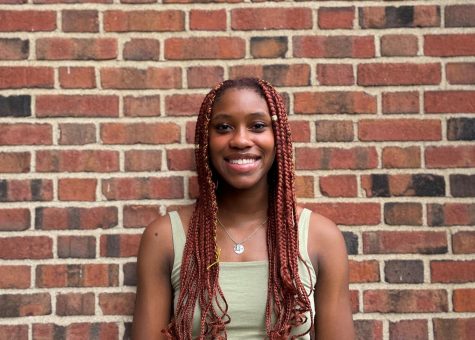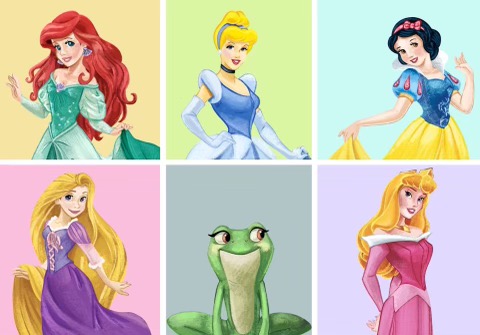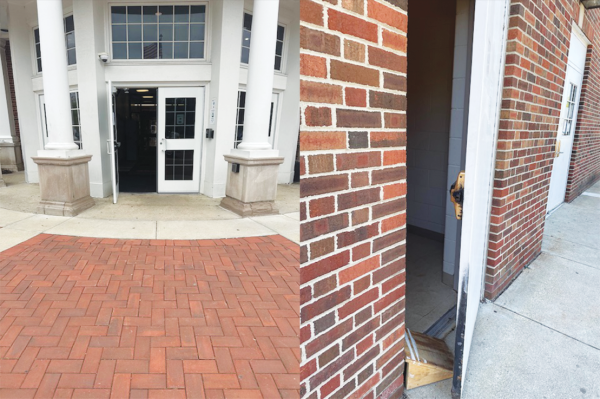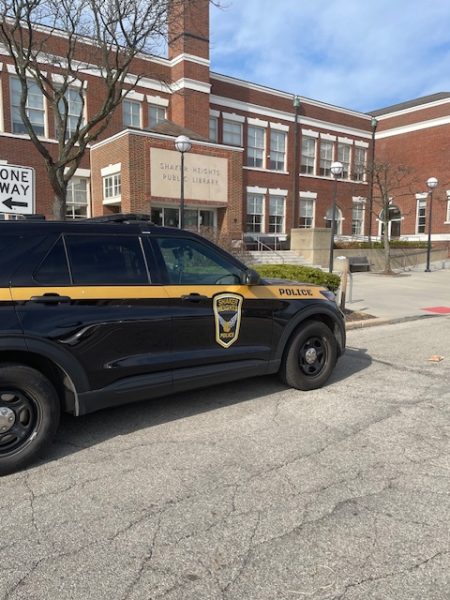Better, But Not Enough
The representation of Black people on screen must continue to evolve
Media representation of Black people has increased significantly. Now, it’s a matter of the kind of representation we are getting.
When I was in second grade, I wanted an American Girl doll so badly. At that time, all my friends were white and had at least two that looked like their exact mini-me’s. They would even match outfits with their dolls and, if they broke an ankle, give their dolls crutches.
I was incredibly jealous. I wanted a mini-me that I could match outfits with and use to play dolls. But when I would go to the store and look for one, there would be 25 pretty white doll options and maybe a few Black options with straight hair and extremely light skin. I couldn’t find a mini-me.
But when the TV show “Jessie” debuted in 2011, with actress Skai Jackson portraying a brown-skin, witty girl who wore her natural hair loud and proud, I finally felt like there was something in popular culture that I could relate to.
Today, there is more representation of Black people than ever. I grew up watching Disney Channel and saw less stereotypical representations of Black girls in characters such as Zuri (“Jessie”), Chyna (“ANT Farm”) and Rocky (“Shake It Up”). “Doc McStuffins,” one of the first animated TV shows on Disney with a Black lead, premiered when I was 8.
The growth in Black roles is evident when you compare what we have grown up seeing to what our parents saw. I was talking to my mom and she said the first shows that she ever saw in which most, if not all, of the characters were Black were “The Cosby Show” (1984), which premiered when my mom was in eighth grade, and “Martin” (1992), which aired the same year she graduated from college.
My grandma watched “Sanford and Son” (1972) when she was 16, “Good Times” (1974), which debuted when she was 18, and “The Jeffersons” (1975) when she was 19.
“Back then we thought we had moved on up because it didn’t matter what part they played, we were just glad to have some representation,” she said. Now, she won’t watch those shows because she gets nothing out of them; they’re all negative. “In ‘Good Times’ the dad was always getting fired and not getting a job. Just a poor Black man. Graffiti everywhere living in the projects with two bedrooms. Why would I want to watch that?” she said.
My grandma loved the 1973 movie “The Mack” while growing up. Looking back, she thinks differently. “ ‘The Mack’ made us look like we were just prostitutes and pimps. That’s all we knew. Well, that’s all they portrayed us as,” she said.
While there are objectively more movies and TV shows with Black actors today, they portray the same tropes over and over again: Tackling a racial issue and explaining racism to white peers; being roped up in a gang or being “ghetto”; suffering trauma; providing comic relief; or being enslaved.
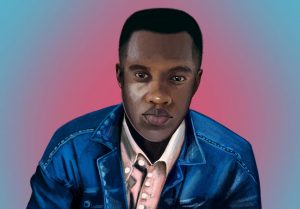
A Google search of “Black movies” returns these popular results: “The Hate U Give,” “Just Mercy,” “One Night In Miami,” “13th,” “Selma,” “Get Out,” “Hidden Figures,” “Moonlight,” “Black Klansman,” “I am Not Your Negro,” “12 Years a Slave,” “Fruitvale Station,” “Da 5 bloods,” “Harriett” and “Beyond the Lights.” Most of these 15 films are dark and depressing.
This comment, which appeared on an Instagram post for the Netflix movie “Two Distant Strangers,” about a Black man getting killed, sums it up: “Not gonna lie, I’m getting tired of seeing black content that revolves around the struggles and the harsh reality of black Americans. I want more content that doesn’t have to do with race, just a black lead or a black cast about something besides the reality of being black. Fantasy/sci-fi, comedy, action/adventure, etc that doesn’t have the theme of black trauma would be nice,” @limelight341 stated.
Meanwhile, when you think of “white” movies, you recall “Legally Blonde,” “Clueless,” “Mean Girls,” “The Notebook,” “Charlie’s Angels,” “16 Candles,” “Breakfast Club” and Marvel and DC movies. Those plots deal with regular teenage problems, superheroes and relationships.
I am not saying that movies about our trauma and real experiences shouldn’t be made. People aren’t taught about slavery enough in schools, and when it is taught, it is whitewashed and sugarcoated. There should be movies that show people our country’s dark past and racist society. But Black people not only deserve, but all people need to watch movies in which Black characters confront regular teenage problems, are superheroes and navigate relationships in the same way white people get to see themselves.
And then there are the other Black struggle movies that revolve around negative stereotypes of Black people, are based in the hood and lack any joy.
There are Black people that were born in the hood, don’t have a dad, like fried chicken and maybe were forced into the life of gang banging. That lifestyle should be portrayed so people can understand the struggle. However, when that is the only representation Black people see, it can make Black people feel like that is all we can live up to.
According to the 1999 Stanford University publication, “Portrayal of Minorities in the Film, Media and Entertainment Industries,” people can internalize such portrayals. “When images and ideas presented at a young age take hold, and are reinforced over years of viewing, these images become reality and once these stereotypes and misconceptions become ingrained in the psyche of American children, they become self-perpetuating,” the study states.
This kind of representation is bad for members of other races, too. When that negative image is the only picture of us that people of other races see time and time again, it makes it easier for them to assume that all Black people perpetuate these stereotypes. For some Black people, it really is the life that they are living. But the redundant depictions put us in a box and make it difficult for people, including ourselves, to see and treat us any differently.
The entertainment industry makes Black people one-dimensional.
That’s why some Black actors are starting to refuse stereotypical roles. Chadwick Bosemen, for example, turned down a slave role because he didn’t “want to perpetuate slavery,” his agent Micheal Green stated in IndieWire in September 2020.
Cicely Tyson, an iconic Black actor, refused to play any more roles that were “demeaning to Black women” after playing two roles as a prostitute, according to Turner Classics Movies. She helped change the way Black women were viewed and opened doors for new opportunities.
We’ve moved away from the “Magic Negro” trope, which was prevelant from the 1980s through the early 2000s. The magic negro is a saintly supporting character who saves the white protagonist through some kind of wise, supernatural or mystical action. The magic negro is the ideal Black person in the eyes of white people and never uses his or her abilities for personal gain. “The Green Mile” (1999) and “Ghost” (1990) are two films that employ the trope.
But, now, I keep seeing the Black person in a predominantly white area who has to explain to their white peers what racism is and help them deal with their white guilt.
In “Grand Army,” for example, Joey — a white girl — ends up getting two Black males in much more trouble than needed. Dom — a Black girl — had to explain why Joey shouldn’t have been the one to tell the teacher about the boys because her white, female privilege made the administration take the claims so much more seriously. More examples of this trope include “The Hate U Give,” “Ginny and Georgia” (Brasia, a Black character, is only included in the plot to tell Ginny, who is of mixed race, that it’s OK to be Black) and “The Help.”
I see this overused trope spilling into real life: the idea that we as Black people are only here to explain racism and provide emotional support to white peers. During the peak of the Black Lives Matter movement, I got texts from white peers, coaches and classmates telling me that they stood with me, but also lengthy statements about how they felt so bad and didn’t know how to help. As if it wasn’t enough to see constant reposts of Black people being beaten and shot by white people; I had to turn around and comfort them and make sure they didn’t feel like a racist.
I appreciated the thought, but the extra comments about how bad they felt were unnecessary.
Not only were people making me feel like I had to comfort them, but they would also ask me specifically what they could do to help. I am not just some search engine you can ask questions at any given hour. Over the summer, my sister, Aaliyah, who is very outspoken on her social media accounts, received non-stop direct messages and texts from white friends asking her about what they could do to help and how to be less offensive. One of her peers even asked her to go out to lunch to discuss what is and isn’t offensive, as if she was his personal encyclopedia.
Too many movies and TV shows that portray exactly that relationship between white protagonists experiencing a racial awakening and Black supporting characters who are there to help them cope with guilt.
The intent is noble. In fact, I love that people want to learn more than ever, it seems. The issue is that there are thousands of articles, TV shows and YouTube videos explaining these exact questions in detail. That’s how people can help support Black people who are trying to give people the answers to these questions: Don’t burden your Black friends with frequent questions on our oppression that could be answered easily in a quick Google search.
Communication is important when it comes to uncomfortable discussions and combating systemic issues, but a little individual research goes a long way in aiding these conversations.
There also is the huge issue of colorism in Black representation. Zendaya is probably one of the most well-known Black actors, and she’s a mixed-race, light-skin person and is clearly a standard of beauty for Black people. Zendaya even acknowledged that she is the “acceptable version of a Black girl” according to BBC news.
When I was younger, I used to say, “When I grow up I’m going to marry a white man so that my baby can come out with light skin and pretty hair.” I said this often, and when my mother would tell me not to, I was confused. The only time I ever saw a Black girl on the screen, she was fair skinned and had long, curly hair. Their beauty was always noted. Didn’t it make sense that I would want my child to experience that same praise?
Years later, I was so excited to watch the movie “The Hate U Give.” I got the book a while after it was published, so it had already gotten a lot of attention, and when I heard there was going to be a movie adaptation, I was even more excited. A movie about police brutality and the struggle of being Black in a predominantly white school is something that I knew I had to see because the story struck a chord with me.
However, when I saw who was cast as the lead, I never picked up the book again. On the cover of the book, a dark-skin girl with kinky hair holds a sign bearing the title. But on the movie poster was light-skin actor Amandla Sterling. I was so hurt. It was such a disappointment because I thought this movie wouldn’t be able to fail me in any way. I refused to see it for a while.
Even the illustrator of the book was disappointed. “I wasn’t exactly thrilled, because of the colorism in Hollywood and everything. I was hoping it would be a very Brown-skinned actress, because there’s so little opportunities in these big movies for darker-skinned actresses. I can’t fudge. That’s how I felt,” she said in an article published on ColorLines.
I did end up seeing the film because I heard great reviews and I figured I’d still be supporting Black actors as a whole. Sterling did a great job, as usual. Sterling and Zendaya are talented, there is no denying that, and there’s never any hate in my heart toward them. The anger and disappointment comes from the industry, which sees them as the only acceptable Black people to play parts of respectable Black people. The only time I see dark-skin actors is when they are the sassy best friend with no storyline.
The last common trope of Black people that I see is when Black characters provide comic relief in films and TV shows but never see their stories developed further.
Let’s look at the example of “To All The Boys I’ve Loved Before.” The trilogy is about Lara Jean Covey and her relationship with Peter Kavinsky throughout the course of three movies. Lara Jean has two sisters, two best friends, another lover, her parents and an enemy. Throughout the movies, it seems like everyone’s story developed. Lara’s older sister had issues with a boyfriend; her little sister gets a boyfriend in the last movie; her best friend, Chris, gets a boyfriend; we learn about her nemesis and how she lost Peter to Lara but also why she was so mean to Lara; and she gets into NYU and her widowed father gets a new wife.
It seems like every character did more than just have a relationship with Lara.
All but one character: her Black friend, Lucas. He receives a letter confessing her love to him and ends up becoming one of her best friends. However, his development stops there. He pops up here and there to help Lara Jean understand her relationship with Peter, but we never learn anything new about him throughout all three movies. He also happened to be gay, which also falls into the trope of the gay best friend, yet another example of narrow representation.
There are so many more examples of movies and TV shows in which Black characters are nothing more than one-dimensional people meant to provide a random few words for the audience to laugh at. Some examples include “Victorious,” “New Girl,” “Tall Girl,” “Good Luck Charlie,” “Clueless” and “Emily in Paris.”
The industry throws us into these roles because they get to say, “Oh, look, we have Black people in here so we’re not racist.” They won’t give us leading roles, too much backstory or a decent amount of screen time because they think their movie or show would no longer appeal to white people. Maybe that’s why the only Black princess is a frog for half the movie and in the first Black Pixar movie, the protagonist is a ghost for most of it.
If we’re being honest here, we like seeing movies with people that we can or wish to relate to. That’s why people get so heated about representation. So when movies have an entirely Black cast, white people are less inclined to watch. Producers and filmmakers are less likely to create leading roles for Black characters, particularly in the romance genre, because they are afraid of losing their white audience.
I looked up “rom com” in the Netflix search bar and the top 15 movies were “17 again,” “Set It Up,” “Always Be My Maybe,” “What A Girl Wants,” “When We First Met,” “Someone Great,” “My Best Friend’s Wedding,” “Mr. Right,” “Yes God, Yes,” “The Perks of Being a Wallflower,” “Falling Inn Love,” “Runaway Bride,” “50 First Dates,” “Crazy Stupid Love” and “Mean Girls 2.”
Only one of those movies is a love story between two Asians, another minority group with little representation unless it’s in a different language or a cartoon. Two movies have a Black man and a woman of another race. Not one of those movies portrays a love story between two Black people. Where are our corny Netflix movies like ‘The Kissing Booth” and “To All The Boys I’ve Loved Before?”
Telecommunications professor Andrew J. Weaver studied this idea and published “The Role of Actors’ Race in White Audiences’ Selective Exposure to Movies.”
He found that white people didn’t outwardly avoid “Black movies.”
“Producers are hesitant to cast minorities in race-neutral romantic roles because of a fear that the White audience will perceive the films as ‘not for them,’ but White audiences perceive romantic films with minorities as ‘not for them’ because they seldom see minorities in race-neutral romantic roles. It’s a vicious cycle,” Weaver told The Washington Post.
Consequently, it seems like when we finally do get representation of movies and TV shows with mostly Black casts, they are targeted more to Black people, rather than to the general public like movies with whiter casts are. Tyler Perry, a man who has brought about a lot of opportunities for Black people, produces comedies, tragedies, dramas and romance movies that could appeal to everyone. However it seems like only Black people watch them. My white friend didn’t even know about the popular “Madea” movies Perry produced until last year. Thirteen of 15 people in my Theory Of Knowledge class are white. Only four of those 13 have seen a “Madea” movie.
I keep seeing this Hulu ad for the new show “Soul of a Nation” about the Black experience in America. The ad stated, “a show about Black people, for all people,” and I think that explains the issue right there. People of other races would probably see an ad featuring mostly Black people and talking about the Black experience and assume the show wasn’t for them. I don’t think it’s out of malice; maybe it’s just lack of interest or fear of overstepping. To me though, that show is for other races even more than it is for Black people. We know what it’s like to be Black, we live it every day. They don’t. Watching it would be a wonderful learning opportunity and could spare us the real-life encounters in which we are expected to drop everything we’re doing and explain what racism is.
Instead of Black characters having no story or making quips for laughs, they should be main characters with their own personal development that doesn’t focus on race or financial struggles.
Roles should be written so that a person of any race can play them. I don’t want to see us going through some sick trauma or having to figure out a way to make it out the hood. I want to see a Black main character of a regular rom-com that’s targeted to all demographics.
“Black Panther” is a movie that checks so many of the boxes. It isn’t a slave or gang related movie. There are characters of all skin tones. The main characters are Black and aren’t just there for comic relief. Since it’s a Marvel movie, it targeted everyone instead of just Black people. In that movie the Black people were prospering, successful, intelligent and strong. That is an example of good Black representation. And the film was a huge hit.
The original “Hairspray” was released in 1988 and included an awful portrayal of Black people. All of the Black characters were in special needs classrooms or were beggars on the street whom white characters reacted to fearfully. In the 2004 rendition, however, the growth for us is clear. The Black characters are respectable and have their own story lines, rather than just being silent or menacing background characters.
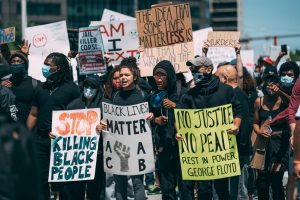
We are making progress, there is no doubt.
We have moved away from the blatantly racist portrayals of Black people and the complete lack of diversity in movies and TV shows. Now they are more subtly racist, and we’re sprinkled in the big blockbusters for a few funny lines or so.
But we also have much better options now. Shows such as “Black-ish,” “My Wife and Kids” and “Moesha” show much better presentations of Black people; two working affluent parents, no baby mommas and baby daddys, no gang affiliations, kids and parents that care about their grades and aspire to go to college. They depict racial struggles, but also normal human beings, relationships, educational and social struggles, so characters are multidimensional.
I understand why it’s so hard to give us the better representation that we want. The industries just try to reflect society and stick with the same tropes that we all know so that we’ll relate and feel comfortable. But that’s why we need to start showing all people as more than just stereotypes, so we will get used to seeing different people in different ways.
How can we expect to move on in society when the same narrow narratives are being shoved down our throats constantly? Diversify portrayals to show both other races and ourselves that we can be more than just what popular culture tells us we are.
A version of this article appears in print on pages 30-35 of Volume 91, Issue I, published May 28, 2021.
Comment using your Facebook, Yahoo, AOL or Hotmail account
